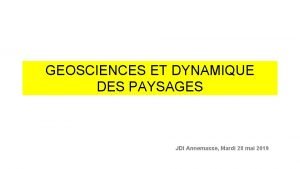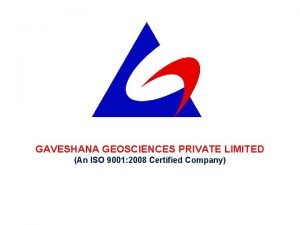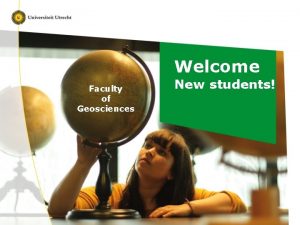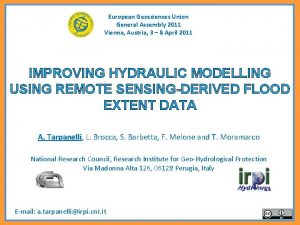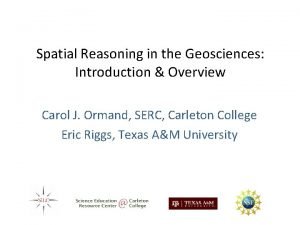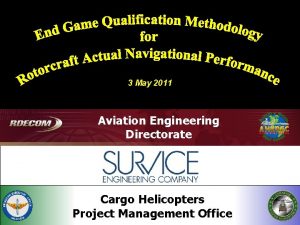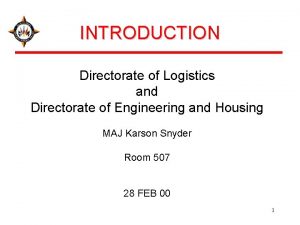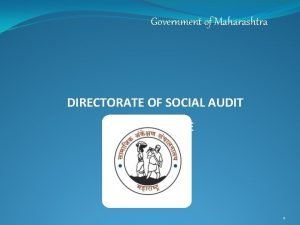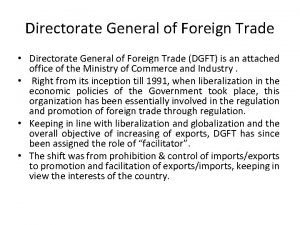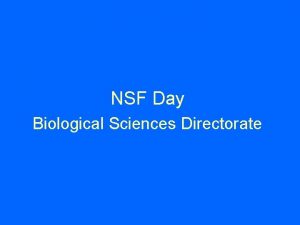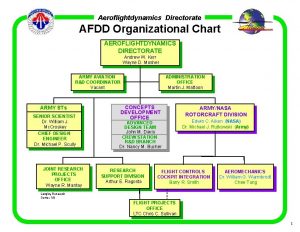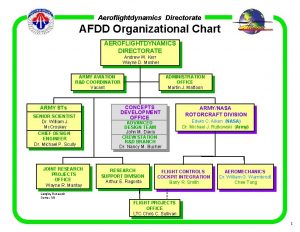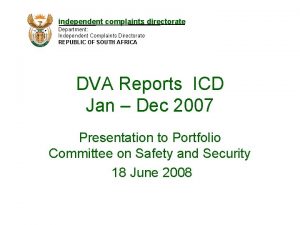Geosciences Directorate Overview May 23 2011 Directorate for



















- Slides: 19

Geosciences Directorate Overview May 23, 2011

Directorate for Geosciences Mission • Support research in atmospheric, earth and ocean sciences • Address nation’s need to understand, predict and respond to environmental events and changes Modes of Support • • • Unsolicited proposals from all scientists with interests in the geosciences Special competitions, often interdisciplinary Promote collaborations with scientists in other disciplines, agencies, and nations Promote integration of research and education Long Term support for shared resources, including: • • • observational platforms analytic facilities computational facilities

GEO Vision A Strategic Plan for the Geosciences • Fostering a sustainable future through better understanding of our complex and changing planet. Ø Understanding complex Earth system Ø Reducing vulnerability and sustaining life Ø Growing geoscience workforce of the future • Key Research Areas to achieve the Geo Vision Ø Ø Ø Dynamic Earth Changing Climate Earth and Life Geosphere-Biosphere Connections Water: Changing Perspectives • Guiding Principles Ø An interdisciplinary approach Ø A commitment to research Ø Education and public understanding of the geosciences

Budget Request by Division

Division of Atmospheric and Geospace Sciences (AGS) • • Furthers understanding of weather, climate and the solarterrestrial system by expanding the fundamental knowledge of the composition and dynamics of the Earth’s atmosphere and geospace environment Supports large, complex facilities required for research in the atmospheric and solar-terrestrial sciences

Division of Earth Sciences (EAR) • Improves the understanding of the structure, composition, and evolution of the Earth and the processes that govern the formation and behavior of the solid Earth • Supports theoretical, computational, laboratories and field stations and state-of-the-art scientific infrastructure • Response to earthquake in Japan – Participating in coordinated response through NEHRP – Receiving inquiries on RAPID support

Division of Ocean Sciences (OCE) Enhances understanding of all aspects of the global oceans and their interactions with the solid earth and the atmosphere Supports major shared-use oceanographic facilities including research vessels and manned deep diving submersibles

Modes of support • Unsolicited proposals from all scientists with interests in the geosciences • investigator-initiated collaborative research programs • individual investigator-initiated research projects • Special competitions, often interdisciplinary • Promote collaborations with scientists in other disciplines, funding agencies, and nations • Promote integration of research and education • Long Term support for shared resources, including: • observational platforms • analytic facilities • computational facilities

FY 2012 Request • In 2012, GEO is requesting $979, 160, 000 • GEO’s FY 2012 Budget Request provides exciting opportunities to: – – – Carry out basic fundamental geoscience research Attack complex multidisciplinary challenges Ignite innovation and opportunity for discovery Catalyze breakthroughs across the sciences Create new networks and cyberinfrastructure Explore the planet in new and transformative ways

GEO Ten-year Funding History Flat funding for five years

Major Investments in 2012 • Continuing investments in Basic Research, Education & Diversity • World class research infrastructure • Science, Engineering and Education for Sustainability (SEES) • Cyberinfrastructure Framework for 21 st Century Science and Engineering (CIF 21) • Creating a More Disaster Resilient America (Ca. MRA)

Creating a More Disaster Resilient America (Ca. MRA) • New, $10 M GEO-wide program • Catalyze basic research efforts in hazard-related science to improve forecasting and prediction of natural and manmade hazardous events • Expand scope of activities beyond traditional boundaries. • May foster new partnerships with other agencies. • Responds to AC/GEO and NSTC/CENRS recommendations. • A formal solicitation is planned

Science, Engineering, and Education for Sustainability (SEES) • Goal: Generate discoveries and build capacity to achieve an environmentally and economically sustainable future • FY 2012 priorities: – – Advance a clean energy future Nurture the emerging SEES workforce Expand research, education, and knowledge dissemination Engage with global partners • Environment, energy, and economy nexus • Increase of $338 million over FY 2010 enacted level (GEO increase $87. 2 M)

SEES – Geosciences Foci • Sustainable Energy Pathways – characterize and understand existing energy systems and their limitations (e. g. wind, geothermal, hydro) – understand risks and stressors associated with new and emerging energy sources (e. g. tidal, clean coal, carbon sequestration) • Sustainability Research Networks – interdisciplinary research and education partnerships involving government, academe, and the private sector – address fundamental issues of use in improving policy and practices with regard to energy, the environment, and human well-being

Cyberinfrastructure Framework for 21 st Century Science and Engineering (CIF 21) • Comprehensive, integrated cyberinfrastructure to transform research, innovation and education • Focus on computational and data-intensive science to address complex problems • Four major components – Data-enabled science – New computational infrastructure – Community research networks – Access and connections to cyberinfrastructure facilities • Geosciences CIF 21 investment is $16 M. Interests include: – acquisition and use of cyberinfrastructure for the conduct of geoscience research – geoinformatics – the tools and techniques that facilitate dataenabled geoscience – enhancement of access and connections to facilities and scientific instruments

Investments in Education and Diversity • GEO is continuing to develop the geoscience workforce of the future • • • OEDG GEO Ed GEO Teach COSEE CAREER

GEO Infrastructure Investments: Recent, Underway, and Considered Earth structure in Pacific NW (Allen et al. , 2009) 1 7

NCAR-Wyoming Supercomputing Center • • • Construction began June 2010 and proceeding on schedule RFPs for supercomputer, data storage and data archive drafted. System will be 1 -1. 5 Pflops peak – at or above NSF “Track 2” Earned Value Management System data indicate satisfactory cost and schedule performance in each of the primary areas of activity. No significant issues or areas of concern. MILESTONE DATE Completion of Construction August 2011 Supercomputer and Data Storage Procurement RFPs: December 2010 HPC Delivery: January 2012 Transition from Boulder Begins: August 2011 Start of Full Operations July 2012 (or earlier) NWSC Webcam, 03 -25 -11 NSF Funding for Construction 2010 $31 million 1 8 2011 $17. 1 million Total $48. 1 million

Questions!
 Géosciences et dynamique des paysages
Géosciences et dynamique des paysages Gaveshana geosciences private limited
Gaveshana geosciences private limited Hci patterns may or may not include code for implementation
Hci patterns may or may not include code for implementation Bästa kameran för astrofoto
Bästa kameran för astrofoto En lathund för arbete med kontinuitetshantering
En lathund för arbete med kontinuitetshantering Mat för unga idrottare
Mat för unga idrottare Gumman cirkel sång
Gumman cirkel sång Offentlig förvaltning
Offentlig förvaltning Cirkelkomposition dikt
Cirkelkomposition dikt Etik och ledarskap etisk kod för chefer
Etik och ledarskap etisk kod för chefer Antikt plagg i rom
Antikt plagg i rom Orubbliga rättigheter
Orubbliga rättigheter Ministerstyre för och nackdelar
Ministerstyre för och nackdelar Big brother rösta
Big brother rösta Densitet vatten
Densitet vatten Sju principer för tillitsbaserad styrning
Sju principer för tillitsbaserad styrning Vem räknas som jude
Vem räknas som jude Nationell inriktning för artificiell intelligens
Nationell inriktning för artificiell intelligens Nyckelkompetenser för livslångt lärande
Nyckelkompetenser för livslångt lärande Sju för caesar
Sju för caesar
